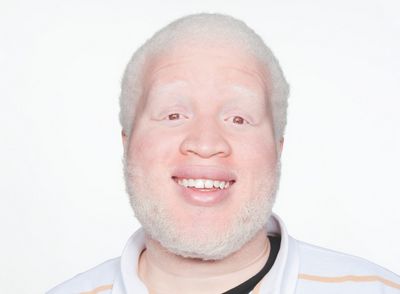Albinism is a common hereditary disorder.

Albinos refer to a sub-group of different rare inherited disorders, which are present in newborns. Albinos usually lack normal pigmentation in the skin, hair and eyes. People with albinos typically have no melanin in their hair, eyes, or skin. They may also have patches of lighter colored skin where there is no melanin.
There are various types of albinos. Some are completely albino, others have red or brown pigmentation, while some have very slight albino traits. A patient with a mild type may exhibit some eye color differences. They may appear blue or green in eyes and have very pale hair. Some patients who have a mild form may also be slightly sensitive to sunlight. There may be cases where people with mild forms of albinism cannot even leave their home due to safety concerns.
Albino people may be diagnosed as having Albinosprinkle, albinoscurvature, or albinism. There are three basic types of Albinosis. It can be autosomal recessive, autosomal dominant, or a combination of both.

The genetic cause of Albinosprinkle is unknown. There is evidence that suggests some kind of recessive gene may be responsible for Albinosprinkle.
Albinoscurvature is caused by an accumulation of abnormal pigment in the body’s blood. Albinoscurvature causes hair to be darkish in color, red in color, or brown in color. In a few instances, a person may display a mixture of both red and brown in color. Albinoism can affect any area of the body. It usually manifests itself in childhood, but it can also show up in adulthood.
Albino people may also experience decreased hearing or vision and may have reduced vision, especially near the retina. Albino people may also experience weakness of the immune system and may display symptoms of fatigue. The condition can cause mental retardation and poor muscle coordination.
Albinos are a minority in certain countries in Africa, Europe, Asia, Oceania, and South America. The reasons for albinism in humans are unknown. There are several theories about the causes of albinism. Some studies suggest that albinos are genetically prone to light skin pigmentation.
Medical professionals have not been able to come up with concrete answers on the cause of albinism. Geneticists believe that albinos are born with a lack of melanin in their skin.

However, there is no direct evidence to support this theory. It’s believed that albinos may be prone to albinos because they are exposed to the sun a lot during the day or are in areas where there are high levels of melanin. There are many theories on why albinos may develop albinosis. One of these theories suggests that the lack of melanin may lead to low immune system strength in some albinos.
People who have albinos in certain areas of the world have higher chances of contracting diseases such as leukemia. Albinos may also be more likely to contract skin cancer.
In many cases, doctors do not know the cause of albinism in humans because of the lack of understanding on certain medications and health conditions. Certain medications are known to cause albinism in some people. For example, birth control pills, antibiotics, and chemotherapy can all be known to cause albinism.
The treatment methods used for albino patients are also unknown. Some physicians might use surgical procedures, such as laser hair removal and phototherapy to treat albinos. A more experimental treatment may be through cryosurgery. In this procedure, a special solution is injected into the affected area.
Albino patients might also be treated through surgery using chemicals that destroy the pigment that causes the albinos. This could be done through injecting a chemical directly into the skin.
Albino patients are at a higher risk of skin cancer because of the possibility of being able to infect other individuals, especially if they are not treated in the early stages. Most albino patients have normal lives and have their skin and hair color corrected in adulthood, but in some rare cases, albinos suffer from cancer of the skin and bones.






































